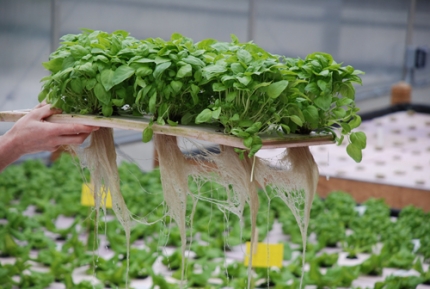
The word hydroponics comes from two Greek words: ὕδρος, meaning water, and πόνειν, meaning to work.It was first coined in 1937 by William Frederick Gericke, an agriculturalist at the University of California at Berkeley, who grew tomatoes in his backyard in a solution mixed from nutrients rather than in soil. The vines grew to be 25 feet high!
There are many advantages that hydroponic gardening and farming have over their conventional counterparts. One is that less water and nutrients are required because the water can be used again and the nutrient levels can be completely controlled. It is easier to control pests and diseases in plants grown hydroponically than in those grown in soil. Best of all, the plants grow healthier and more fit for human consumption and easier to harvest. This article is for those who would like to start a hydroponic garden of their own.
Starting a home garden
The tasks of setting up a hydroponic garden in your home is a very simple one. You need only three things: a hydroculture pot, some marble or gravel for decoration and a hydrous silicate mineral calledvermiculite. You should note that not all plants can be grown equally well by the hydroponic method. For that reason you should choose such food plants as tomatoes, lettuce, cucumbers, peppers and various kinds of herbs.
Your hydroculture pot should be double-walled. Alternatively, you can use a container made out of opaque glass or ceramics. The marbles, gravel or vermiculite will serve to support the roots of your plants, which you can also anchor by attaching them to thin sheets of plastic, with the roots dangling freely.
The plants will need to have a source of oxygen. If the tank has a capacity of 50 gallons or less then a fish tank bubbler will provide enough oxygen for all the plants it contains. To fertilize them you will need a substance manufactured specifically for hydroponic plants that provides them with the thirteen macro- and micro-nutrients they need for growth and development. The pH of the fertilizer should be kept at 6.0; you can monitor it by using a pH test kit.
Occasionally you will want the solution to descend as low on the roots as possible. This will promote oxygenization. The solution should be changed every other week.






















Recent Reviews